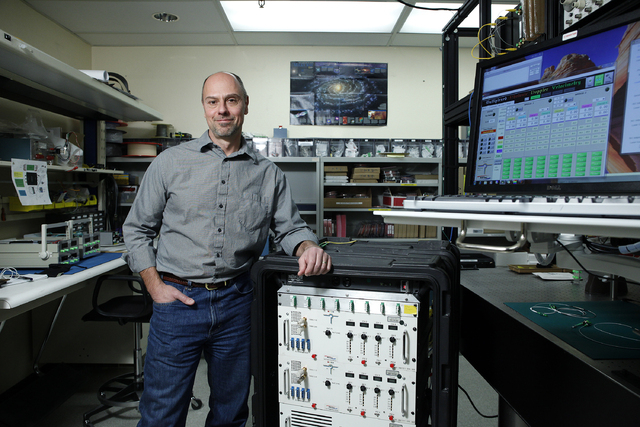Nuclear explosions prove sometimes smaller is better
There’s a lot riding on the shoulders of Ed Daykin and his team when it comes to certifying that the nation’s nuclear warheads are safe, secure and reliable.
But Daykin, an experimental physicist for National Security Technologies LLC — the prime contractor at the Energy Department’s National Nuclear Security Administration’s Nevada field office — isn’t too worried about the high-tech task. That’s because his team of scientists “stands on the shoulders of giants” who accomplished the task year after year at the former Nevada Test Site, now the Nevada National Security Site.
Ensuring nuclear bombs work as designed once involved full-scale detonations, starting with with the first atmospheric test, Trinity, at Alamogordo, N.M., in 1945, to demonstrate the Fat Man nuclear weapon used in World War II.
Nuclear tests that produced explosive yields, some large enough to sway buildings 65 miles away in Las Vegas, were conducted below-ground at the test site from 1963 to 1992.
Scientists now employ subcritical nuclear experiments, physics tools, the National Ignition Facility in Livermore, Calif., and supercomputers to achieve the goal. These small-scale experiments are conducted 85 miles northwest of Las Vegas, in alcoves 960-feet below-ground at the site’s U1a facility.
Since 1997, the U.S. nuclear weapons stockpile must be certified annually using a science-based program. Under the program, Energy Department scientists determine the weapons are safe and secure as their main component, plutonium, continues to age. In some cases plutonium from the stockpile was used in the experiments, in others a comparison is made using newer and older plutonium from production facilities.
The experiments are “subcritical,” stopping short of a nuclear chain-reaction. Unlike the mushroom clouds from the days of atmospheric tests, the experiments get little notice. In a few months scientists expect to conduct the nation’s 28th subcritical experiment in 17 years.
Tests that once required cables and diagnostic gear packed in canisters several stories tall atop a nuclear device at the bottom of a deep shaft now are done by exploding a tiny bit of plutonium in an underground cavern. The nuclear material’s behavior when slammed by shock waves from high-explosives is measured by lasers and recorded on instruments that could fit in a refrigerator.
Since the first subcritical experiment, Rebound in 1997, scientists have found that laser beams emanating inside a miniature sphere of plutonium, or “pin dome” arrangement, allows them to detect data in the split-second it takes for an explosion to compress the sphere. They don’t need a big blow to get the same information.
“It works the same way as Doppler radar,” he said, referring to the technique meteorologists use to detect and predict the severity of storms and changes in weather. “Instead of a cloud moving in, it’s a surface moving in. It gives us information on how it’s behaving.”
Before lasers, scientists measured the implosion using pins and wires that would short out, providing a few dozen or perhaps a few hundred data points. Lasers provide “millions of more points of data. It’s like comparing the Internet to a telegraph machine,” Daykin said.
The most recent subcritical experiment, Pollux, in December 2012, validated the MPDV system — an acroynym for Multiplexed Photonic Doppler Velocimetry. MPDV measures and records the dynamics — speed or velocity — of the material as it is hit by the explosion.
Daykin and his colleagues at the security site, along with researchers Ted Strand from Lawrence Livermore National Laboratory in California and David Holtkamp at the Los Alamos National Laboratory in New Mexico, developed the MPDV system. The team received one of R&D Magazine’s prestigious “R&D 100” awards for the top 100 proven technological advances of 2012.
Subcritical experiments debuted in 1997, five years after the United States began observing a moratorium on full-scale nuclear weapons tests. The last U.S. test, Divider, was conducted Sept. 23, 1992.President George H.W. Bush initiated the moratorium in accord with an international arms control agreement even though the Senate didn’t ratify the Comprehensive Test Ban Treaty. Subsequent presidents have followed suit.
Contact reporter Keith Rogers at krogers@reviewjournal.com or 702-383-0308. Follow him on Twitter @KeithRogers2.

















